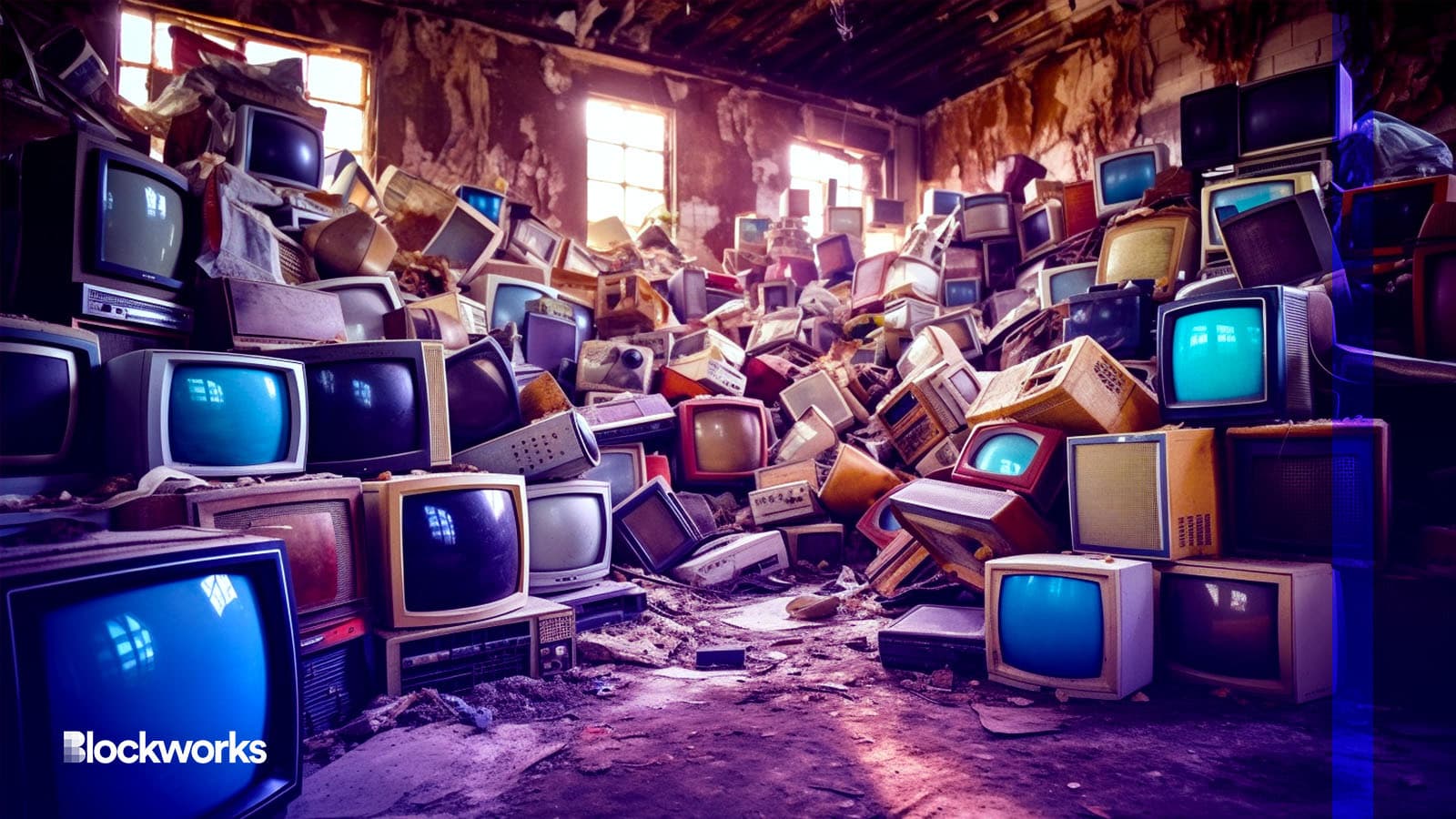TV Is Dying, but Decentralization Is the Cure
Decentralization needs to do some chest compressions on TV if we want to watch more Succession

Midjourney modified by Blockworks
American television and video heritage are at risk.
There’s no reason to believe that your favorite shows or your favorite team’s games will be preserved for future generations; in fact, there’s reason to be concerned.
Some of our most valuable cultural records have disappeared or are in danger of being lost. TV, now arguably the best cultural barometer of any medium, has determined what we know, how we think, believe, and perceive ourselves and the world around us.
Web3 tools and protocols could play a critical role in preventing a digital dark age by providing decentralized and resilient solutions for storing and distributing digital content.
Let’s rewind
TV has always been a highly ephemeral medium.
TV preservationists have long been at a technological disadvantage — just look at how many early live television recordings have been wiped. It’s telling that one of the best records of television comes from activist and archivist Marion Stokes, who planned her diary around the TV schedule, successfully archiving over 71,000 tapes worth of TV over 35 years.
We now live in the golden age of television where viewers are spoiled for choice and ease. But in today’s streaming era, fan-favorite programs are also subject to the whims of corporate mergers, content removals and the ever-expanding detritus left behind from earlier generations of the web.
Last year, HBO Max (now just Max) quietly removed a cache of films and series following the Warner Bros. and Discovery merger, with animated projects and family shows taking the brunt of these changes. Even Sesame Street, a beloved pillar of American pop and education culture, was unsafe from corporate cuts. Last year, about 200 episodes of the series — mostly older ones — were removed from the record.
We are subject to the increasingly precarious nature of our digital media. We can’t easily distinguish between content leaving a platform and content vanishing from existence.
A generation of art risks extinction if the companies that own streaming services can’t financially justify preserving their vast libraries.
The real killer app
Streamed information is, by definition, ephemeral.
The Internet is hemorrhaging valuable content; today, only 7% of the world’s generated data actually gets stored, and that ratio is decreasing over time — that number will be down to 5% in the next five years. IDC estimates that the datasphere will grow to 175 zettabytes by 2025. At this rate, the current cloud storage infrastructure can’t keep up.
But there are currently some efforts underway to save more of our content.
The Internet Archive and their Wayback Machine is a heroic nonprofit effort that has backed up 800 billion web pages, filling a few hundreds of petabytes (note, there are over a million petabytes in a zettabyte), on top of its other projects like a free digital ebook library and a historical software library.
The Internet Archive also hosts the Filecoin Archives, a community-led project to curate, disseminate and preserve important open access to information often at risk of being lost. The project would allow anyone to upload and access books, music, films, and other cultural artifacts without fear of them being lost or destroyed.
But the harder tasks of digital preservation and rescue still lay ahead.
We, the public domain, are about to experience a massive influx of new works, as copyright laws for many iconic films, books and songs begin to expire, and the potential benefits of preserving these works for future generations cannot be overstated. We need a decentralized, resilient system for archiving and sharing these works, ensuring they remain accessible and free for all to enjoy.
It will likely fall to librarians, archivists and the Web3 technologists — the monastic orders of the future — to ensure that something of the heady days of our “digital revolution” remains interpretable for future generations.
Preservationists could create digital tokens representing ownership in the preserved TV content and allow supporters to contribute to the preservation efforts in exchange for these tokens.
NFTs can also be used to track authenticity or ownership rights. Smart contracts could be used to establish transparent and immutable ownership and distribution rights for TV content, making it easier for preservationists to navigate the complex legal and ownership issues associated with old TV shows and movies.
TV is one of the most powerful generators of our collective memories, the most addicting and shocking reflection of society (sometimes a black mirror, if you will), and the most virulent incubator of social trends. Our heritage will diminish if this vast record of our culture is allowed to vanish.
Preserving our cultural history — whether it be the television shows that shaped us or medical journals with breakthroughs that saved us — will be Web3’s killer application.
Get the news in your inbox. Explore Blockworks newsletters:
- The Breakdown: Decoding crypto and the markets. Daily.
- 0xResearch: Alpha in your inbox. Think like an analyst.






